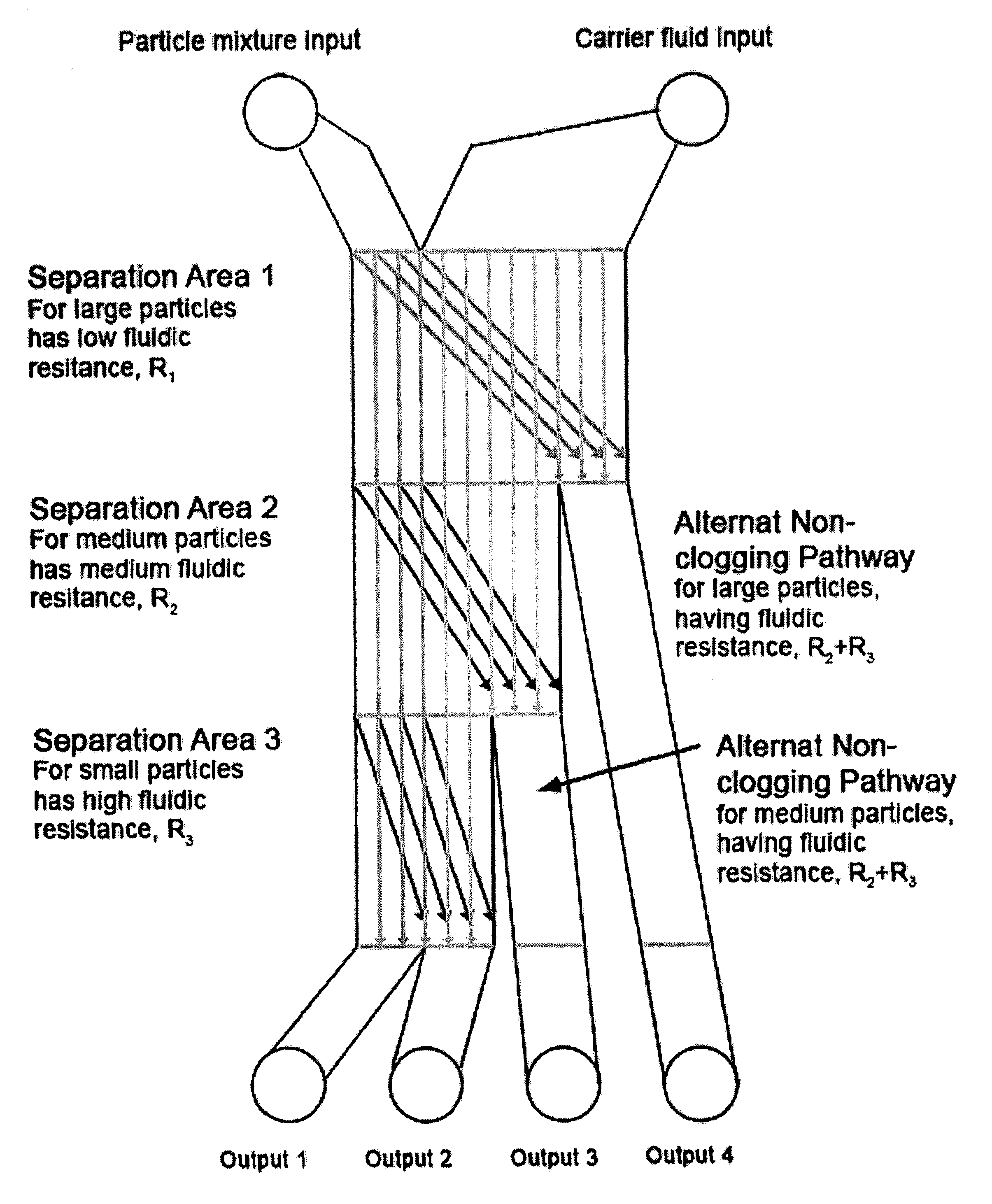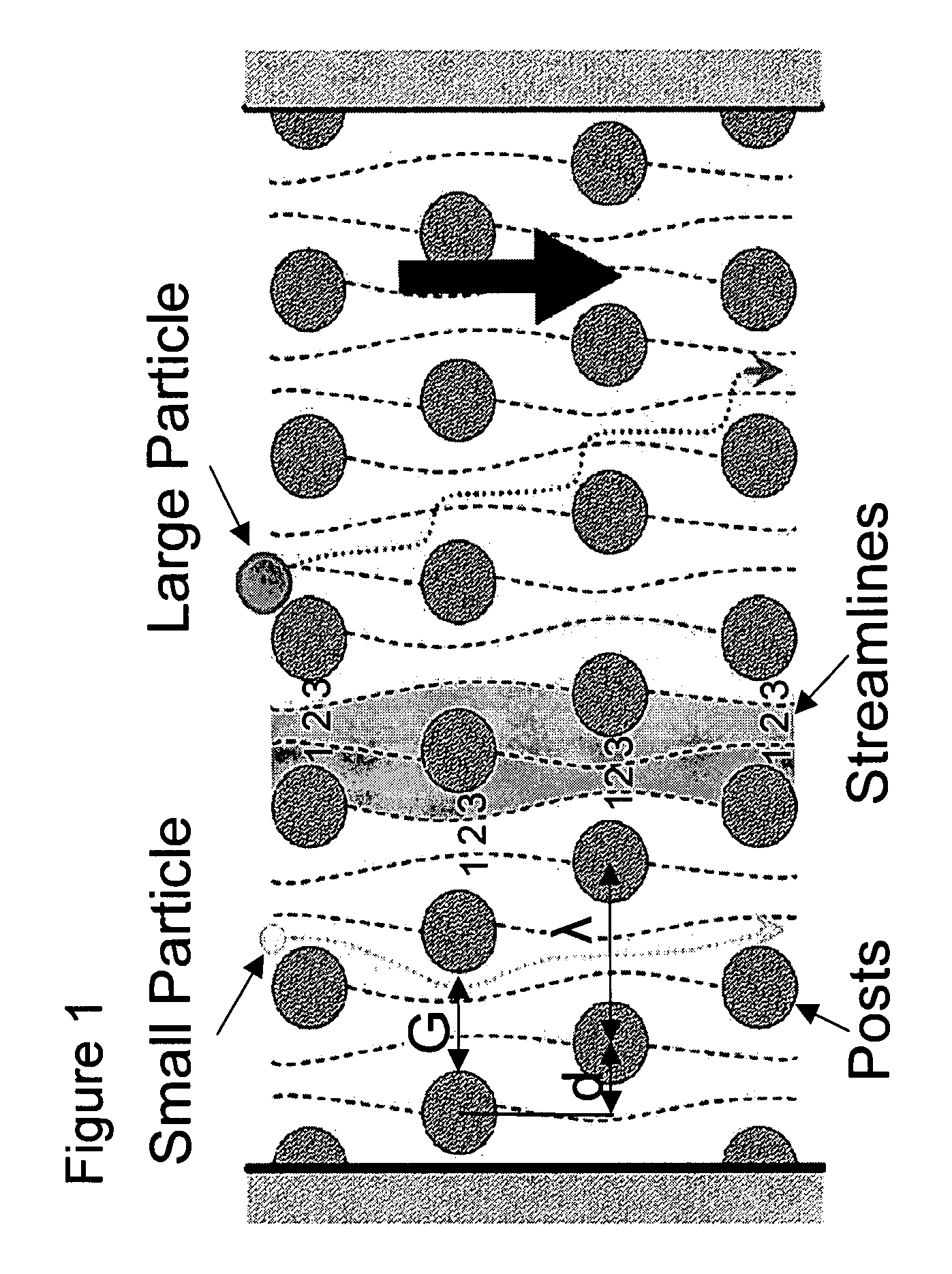Apparatus and method for continuous particle separation
a particle and apparatus technology, applied in the field of microfluidic methods and devices for the separation of particles according to size, can solve the problems of limiting resolution, limiting resolution, and low diffusion coefficient, and achieve the effect of low reynolds number
- Summary
- Abstract
- Description
- Claims
- Application Information
AI Technical Summary
Problems solved by technology
Method used
Image
Examples
example 1
Fractionating Device
[0057]An analytical fractionating device was fabricated to separate white blood cells from red blood cells and plasma, and to fractionate the white blood cells according to size. The device had a narrow throat width of 50 μm, and was designed to work with 10 μl of blood or less, rather than large volumes. The device is illustrated in FIG. 2. As the main design concern was to create a high dispersion with a range in the sizes of white blood cells of 5 to 10 μm, the device was not designed to remove smaller objects, such as platelets, which have a diameter on the order of 1 μm. Therefore, the required dynamic range was less than 4, and only a single chirped ε region with a constant gap G was required. A schematic of the device is illustrated in FIG. 2A.
[0058]Whole blood and a running buffer were introduced into separate channels at the top of the device, and vertical laminar flow was maintained throughout the device. The active region of the device had 13 consecuti...
example 2
Preparative Device
[0066]A preparative device was designed and fabricated for the isolation of undiluted blood plasma from whole blood for further study. The device was fabricated with a wide throat width of 500 μm, which was one-half of the 1 mm wide active area. This allowed the preparation of larger volumes and higher flow rates, such that flow rates of at least 1 μl / min were possible, as illustrated in FIG. 6. Because the device was required to remove both large 10 to 20 μm diameter white blood cells as well as small platelets, only the high dynamic range of a cascade device would work without clogging. In the fabricated device, the cascade had three different regions with three different gap sizes. As this particular application required only the production of a substantially cell-free plasma, the individual fractionations produced in each of the regions are not maintained. Instead, all components larger than 1.5 μm were combined in the balanced serpentine region on the side of ...
PUM
| Property | Measurement | Unit |
|---|---|---|
| size | aaaaa | aaaaa |
| size | aaaaa | aaaaa |
| size | aaaaa | aaaaa |
Abstract
Description
Claims
Application Information
 Login to View More
Login to View More - R&D
- Intellectual Property
- Life Sciences
- Materials
- Tech Scout
- Unparalleled Data Quality
- Higher Quality Content
- 60% Fewer Hallucinations
Browse by: Latest US Patents, China's latest patents, Technical Efficacy Thesaurus, Application Domain, Technology Topic, Popular Technical Reports.
© 2025 PatSnap. All rights reserved.Legal|Privacy policy|Modern Slavery Act Transparency Statement|Sitemap|About US| Contact US: help@patsnap.com



